L3: Do Apes have a theory of mind? (mainly chimps)
1/50
There's no tags or description
Looks like no tags are added yet.
Name | Mastery | Learn | Test | Matching | Spaced |
|---|
No study sessions yet.
51 Terms
Who argues that non-human apes do possess a theory of mind?
Tomasello
Who argues that non-human apes do not possess a theory of mind?
Povinelli
what is the first possibility about apes mental states?
Chimpanzee's mind seems similar to ours precisely because it is similar. evolutionary and genetic - similar mental states.
what is the second possibility about apes mental states? ?
We cannot help distorting the chimpanzee's mind, recreating it in our own image. tendency to anthropomorphise.
what did Premack & Woodruff (1978) find?
The chimp offered the appropriate solutions to the actors problems which suggested it understood the actors intention/goal.
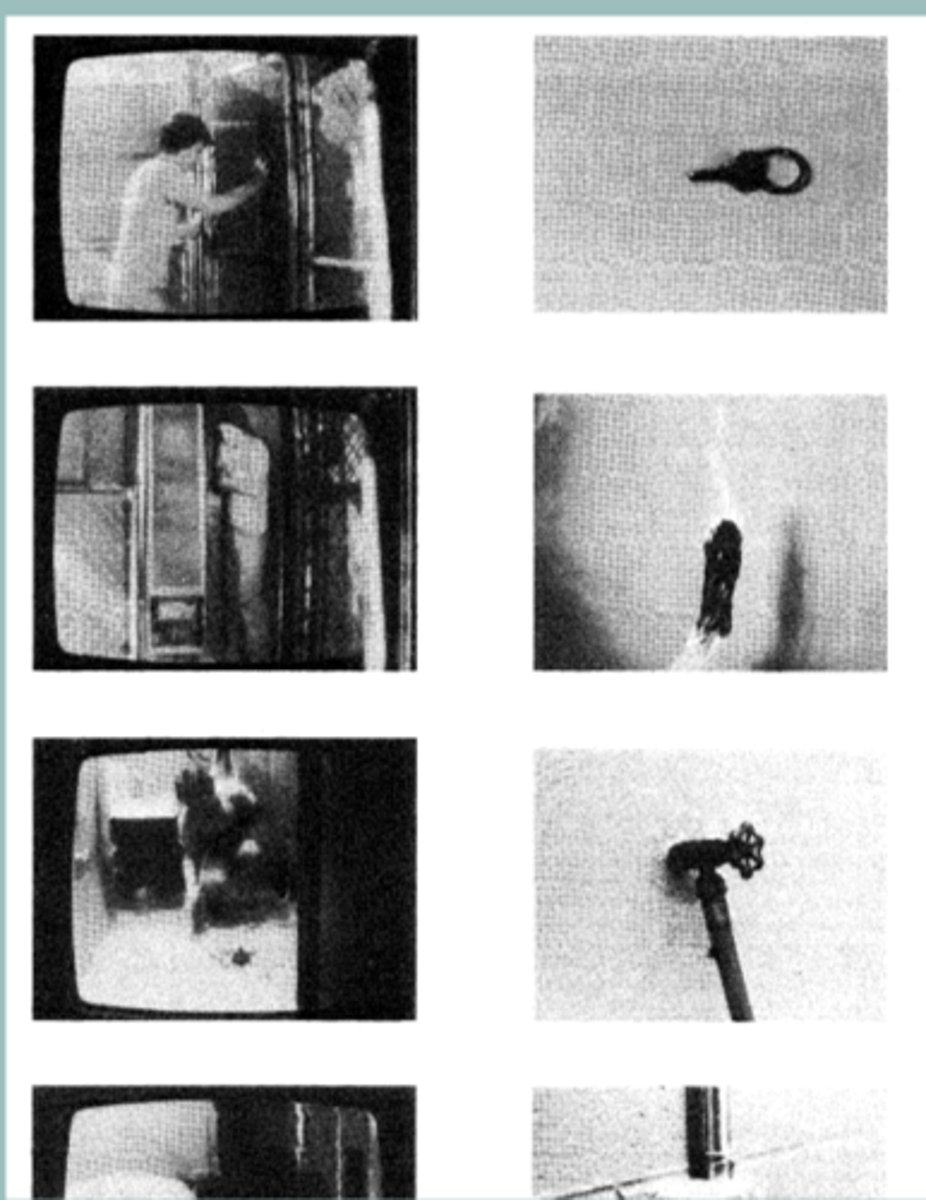
what does Povinelli believe about chimps ToM?
Chimps do not reason about other's beliefs, or any other mental states. same behaviours but not same underlying psychological mechanisms - other reasons
what does Tomasello believe about chimps ToM?
chimps have ToM in some respects, BUT not in others (may not be as complex ToM that humans possess) no evidence whether they understand FB but they understand goals and intentions and perception and knowledge of others
who developed the Behavioural abstraction Hypothesis?
Povinelli
what is the behavioural abstraction Hypothesis? (BAH)
chimps have NO MENTAL STATE ATTRIBUTION
- chimps understand surface level behaviour and pay attention to rules/patterns of behavioural rules with no relation to interpretation but learning/predict the future from past behaviours/pattern and adjust behaviour accordingly.
what does Tomasello say about behavioural rules?
Chimps are highly social animals.
- Argues that chimps can infer states in new situations and anticipate what others will do based on goals and intentions. Not just learnt patterns/rules but in novel situations.
what is a goal?
what a person is trying to acheive
what is an intention?
the action/intention plan chosen for pursuing this goal
- (can have a failed intention so goal never takes place)
Buttelmann et al (2007) findings
In the instance when the actors hands were unavailable, the chips used their hands instead of their feet to push the panel. Understood that the only reason the actor used his feet was because his hands were occupied. Possessed understanding of the actors mental state

What was found in the chimps behaviour when they observed the experimenter using his foot whilst his hands were free? Buttelmann et al (2007)
The chimps seemed to imitate the experimenters actions exactly by using their feet (when it was perceived to be done intentionally)
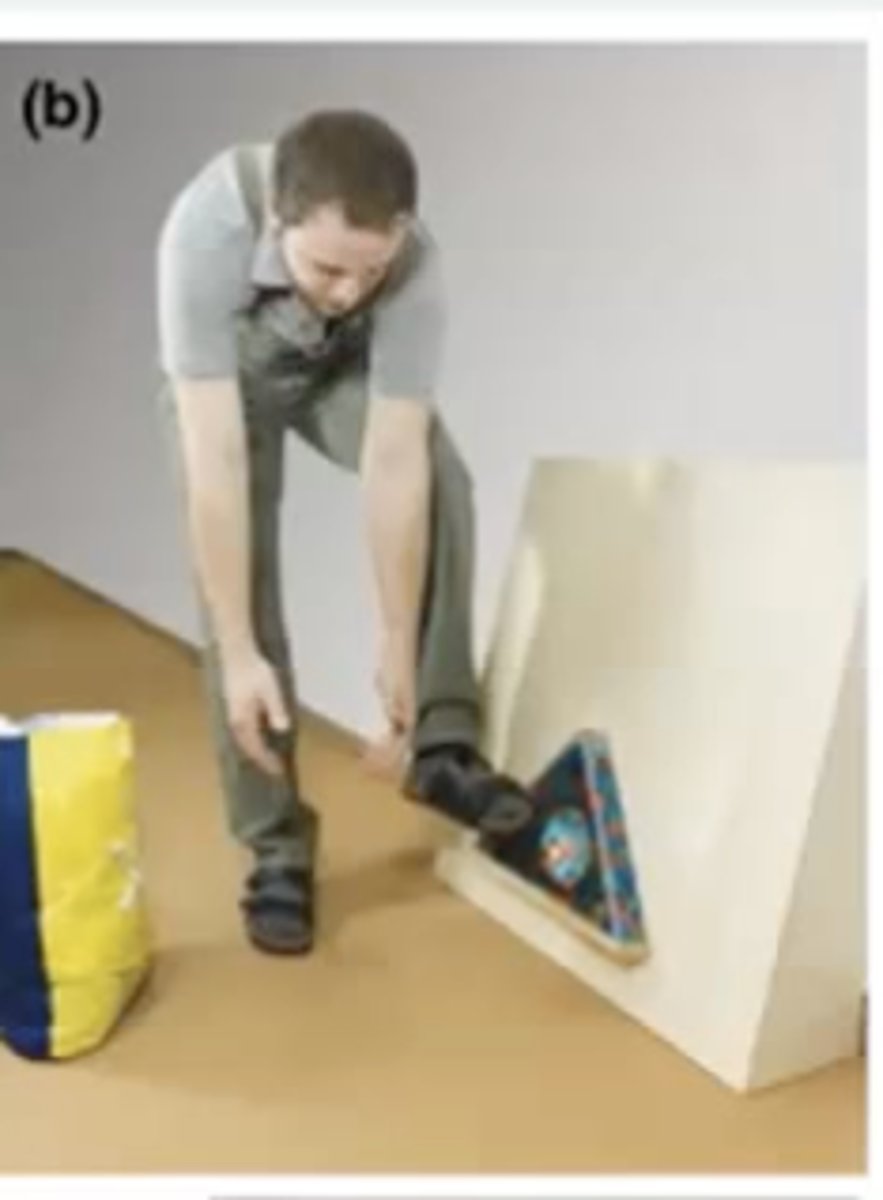
What does Altruistic helping require?
- Cognition (another's goals)
- altruistic motivation (no benefit)
what did Warneken & Tomasello (2006) finding in 18 month old infants (altruistic helping)
- 18 m/o infants help with the actors incompetence (e.g access thrawrted). no verbalising needed. infants understood within 5 seconds. could differentiate the need for help.
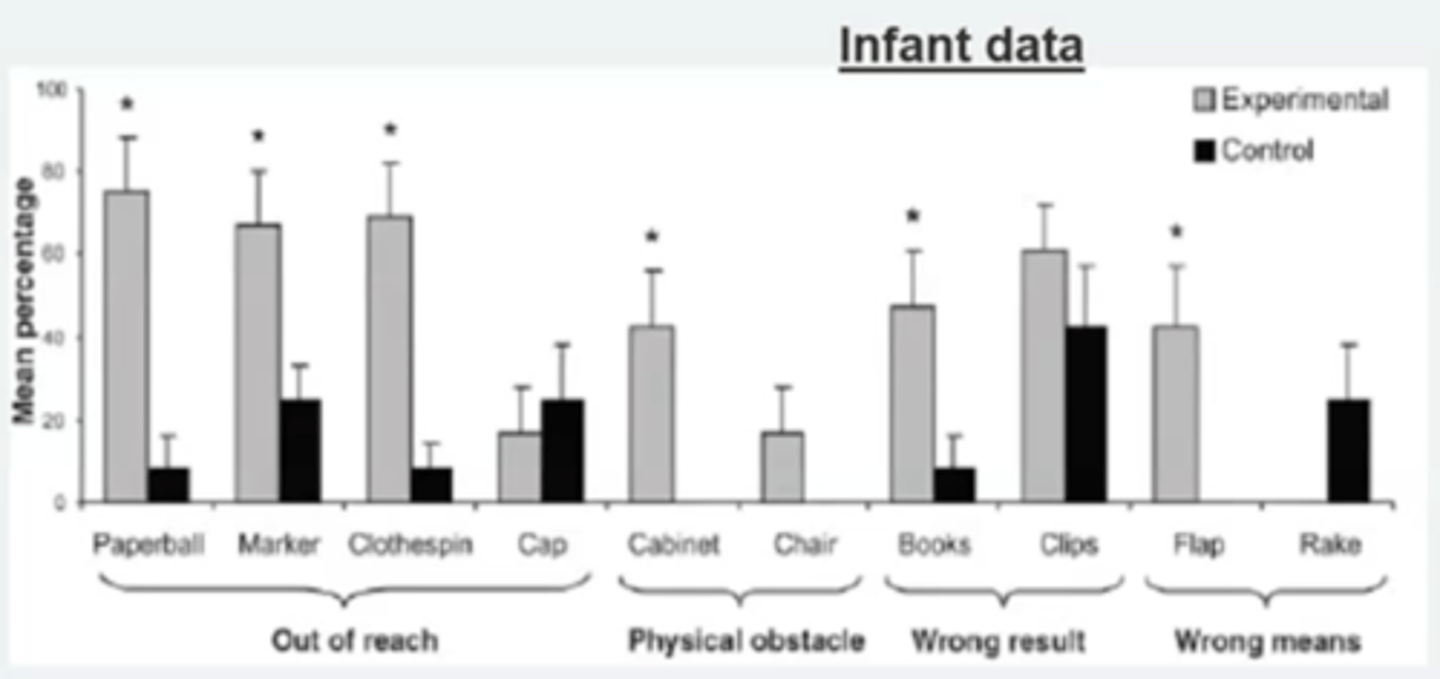
what did Warneken & Tomasello (2006) finding in 36-54 month old chimps?
- 36-54 m/o chimps - understood to some degree to help actor reach something/out of reach
- (grasping motion salient cue?)
Warneken & Tomasello (2006) discussion
- chimps are lab chimps - raised in captivity so not representative of a chimp in the wilds behaviour
- humans inherently more cooperative than chimps (inherently more competitive)
study tests cooperative behaviour which is not in line with how chimps behave - may have picked up these behaviours.
what do findings from Call & Tomasello, 2008 suggest?
both infants and Chimps show understanding of goals or intentions in a variety of circumstances. which contradicts Povinelli as behaviours are not just learnt as he suggested (novel, manufactured situation)
why are eye gazes significant?
Because they communicate vital information about an individuals mental states.
Why is it important for chimps to follow eye gazes?
For chimps safety in wild, important for them to have a perception of what other chimps see and know. can they reason about perception and knowledge?
what mental states may eye gazes of another person indicate>
Their focus of attention, object of reference, desire or aversion and intent to act.
- Feelings, mental activities
do infants prefer open eyes or closed eyes? (Batki et al, 2000)
Open - intentionally looking at face
Do infants prefer direct or averted gazes? (Farroni et al, 2000)
Direct gazes.
At what age to infants begin to follow other peoples gazes?
6 months old.
- attention to gaze starts very early - evolved/adapted trait. paying attention to where other people are looking is important for development.
What did Povinelli & Eddy 1996, Tomasello et al (2007) investigate?
Whether apes could follow a gaze.
Can apes follow gaze? what did Povinelli & Eddy, Tomasello et al finding
chimp will not follow experimenters eye direction when screen is obscured.
- but they rely more on head direction than eye direction

Povinelli & Eddy (1996) findings (blindfold study)
Begging for food is indiscriminate, even when human was blind folded or had bucket on head - they continued to beg - suggested to Povinelli that they have no ToM. oblivious to psychological distinction.

Kaminski et al (2004) begging study results
The chimps begged more when they were being 'watched' - no begging when they were facing behind, but begging when they were facing forward regardless of whether humans eyes were closed or not. - not sensitive to open/closed eyes.
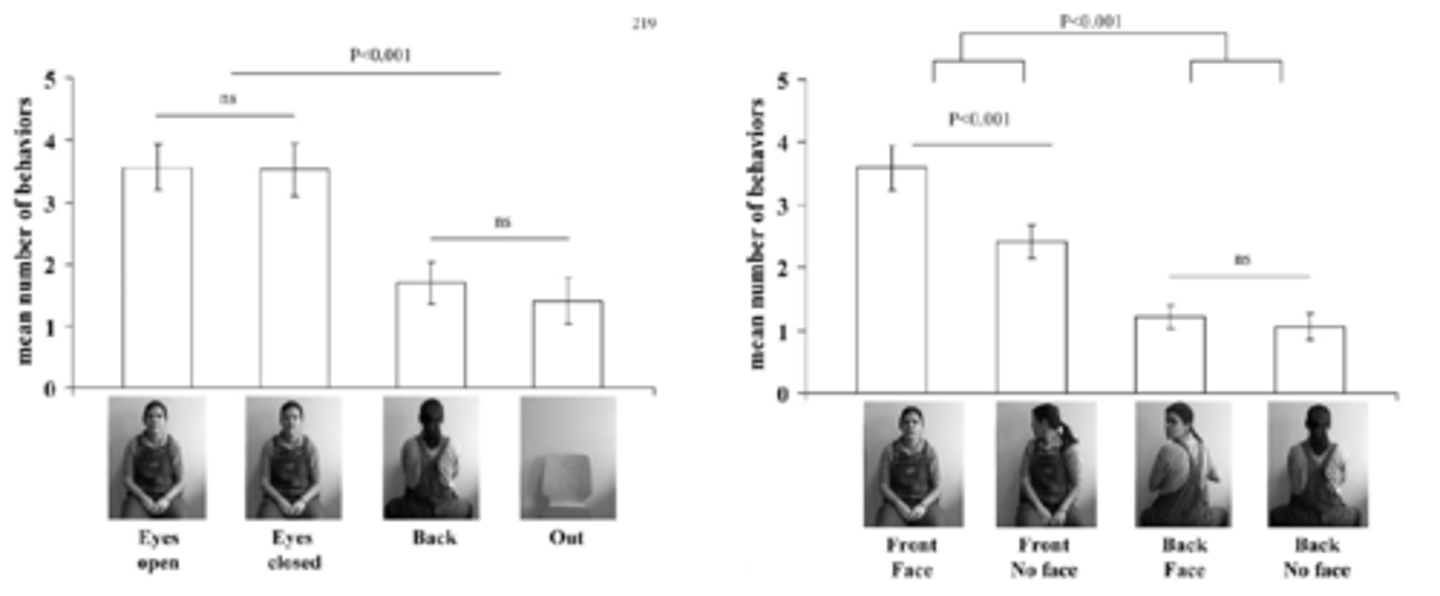
Kaminski et al (2004) begging study findings
The chimps were more responsive/sensitive to the direction of the both body and head but not specific eye gazes.
- different ToM to what humans may possess - eye gaze vs direction.
- level of sophistication may be less than humans.
what was Tomasello's critique of the co-operative helping lab studies
Negative results in the lab required co-operative communication with humans. lab raised apes does not imitate wild apes. Have to use context in which ape was evolved in.
Who created a more competitive situation to understand chimps knowledge and perception?
Hare, Call & Tomasello (2001)
how did Hare, Call & Tomasello (2001) set up their study
- area decorated to look more natural
- domaint vs subordinate ape
- food visible to subordinate but not dominant chimp using blinds.
- in other condition both chimps could see where food was hidden
- how do the chimps behave?
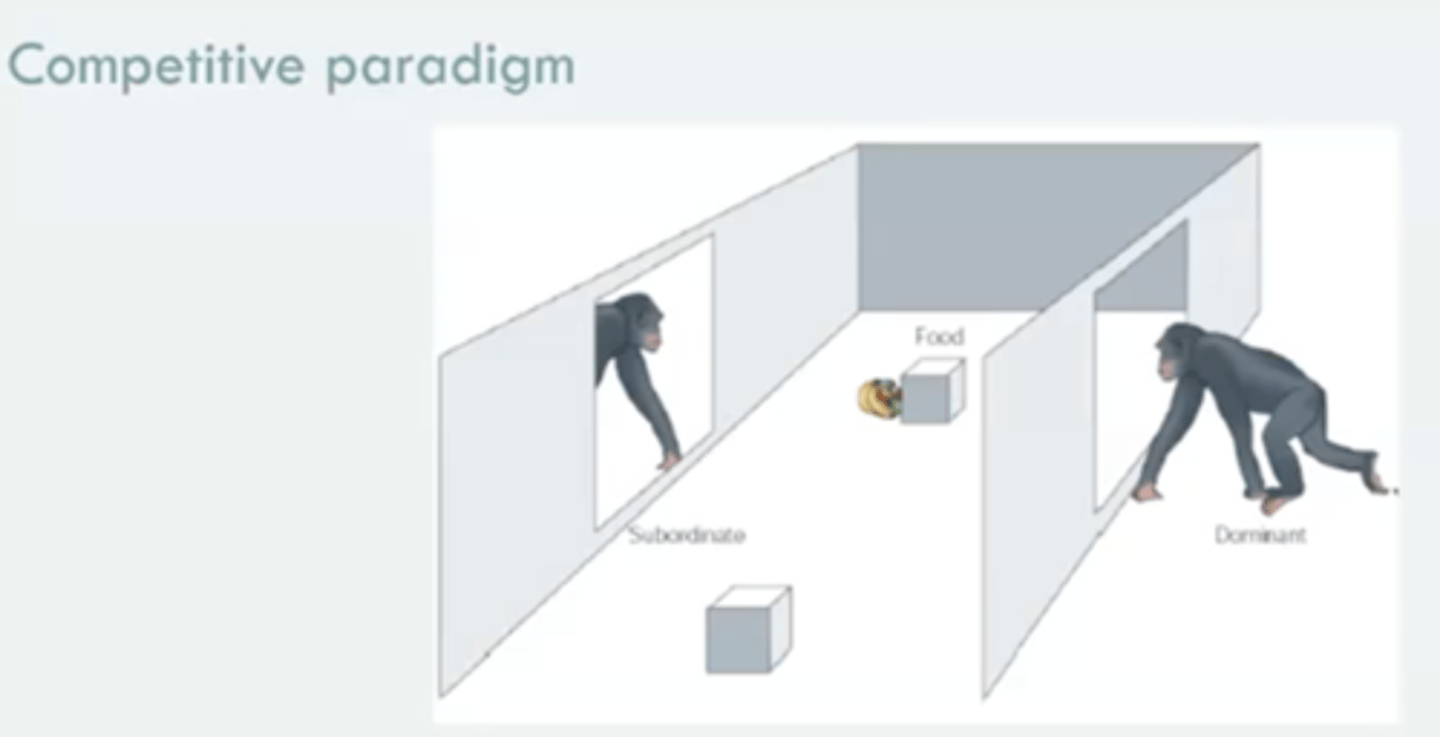
Hare, Call & Tomasello (2001) how did the chimp behave when the dominant chimp could see where the food was hidden when the blind was up for D?
the Subordinate chimp went after the food as dominant could not see hiding place so not facing hierarchal repercussions.
Hare, Call & Tomasello (2001) how did the subordinate chimp behave when the dominant chimp could also see where the food was hidden.
the sub chimp waited until the dominant went and got food first
what do Hare, Call & Tomasello (2001) findings suggest?
the subordinate chimp was aware of the knowledge that the dominant chimp had/reason about what it could see/believe based on what it had seen/not seen and changed their behaviour accordingly.
What was the mental-state attribution interpretation of Hare et al's (2001) study?
The subordinate chimp has a mental reasoning about what the dominant chimp can and can't see and predicts his actions based on this and acts accordingly.
What was the behavioural Abstraction interpretation of Hare et al's (2001)
Removes the knowledge the chimp has of 'knowing' what the dominant chimp can or can't see. just has knowledge that the dominant chimp will go after the food from previous behaviour as it was present when the food was placed there. removes the layer of complexity.
Hare et al (2006) results
Chimps tend to reach for the food where presumably the humans cannot see it, (left) (based on body orientation)
- aware of what experimenter cant see and goes for that side.
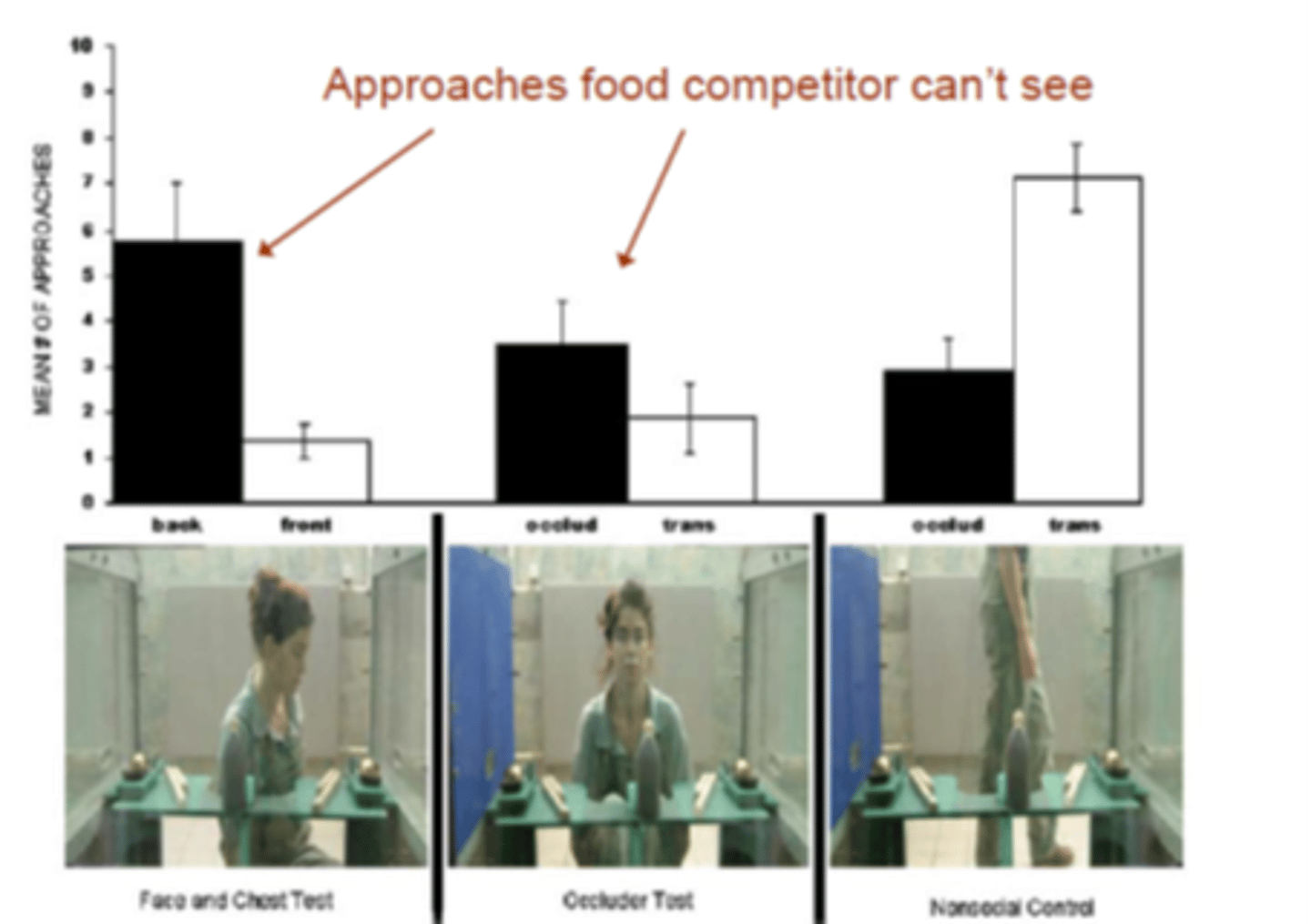
Hare et al (2006) screen condition/visual occlusion.
chimps only go to food on one size as they know the experimenter cannot see it - how the chimp interprets it in terms of what the experimenter can and cannot see. removes bias. the more obscured the experimenters vision becomes for one specific side the chimp goes for the treat on that side.
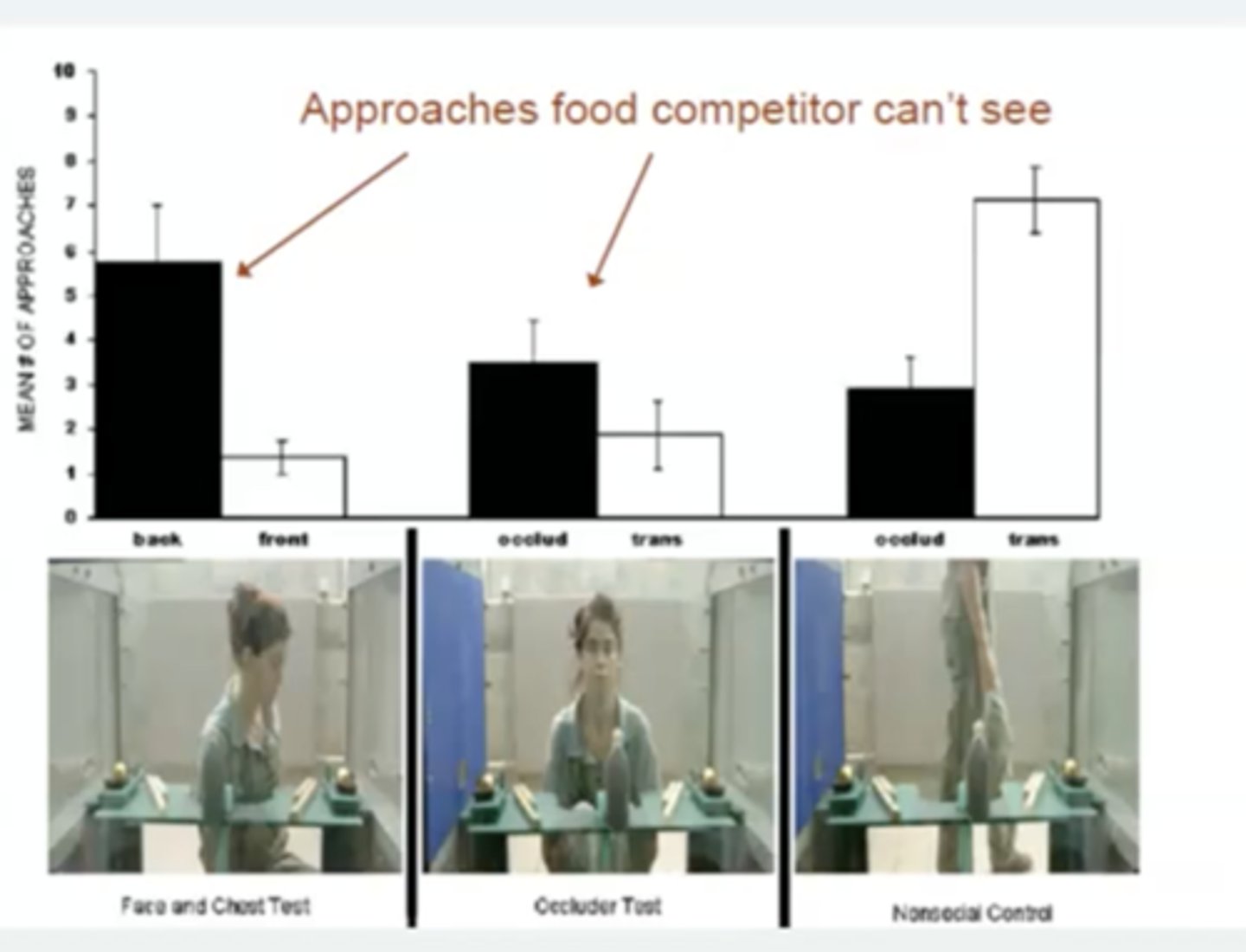
what perspective taking did Melis, Call & Tomasello (2006) take?
Auditory perspective perspective
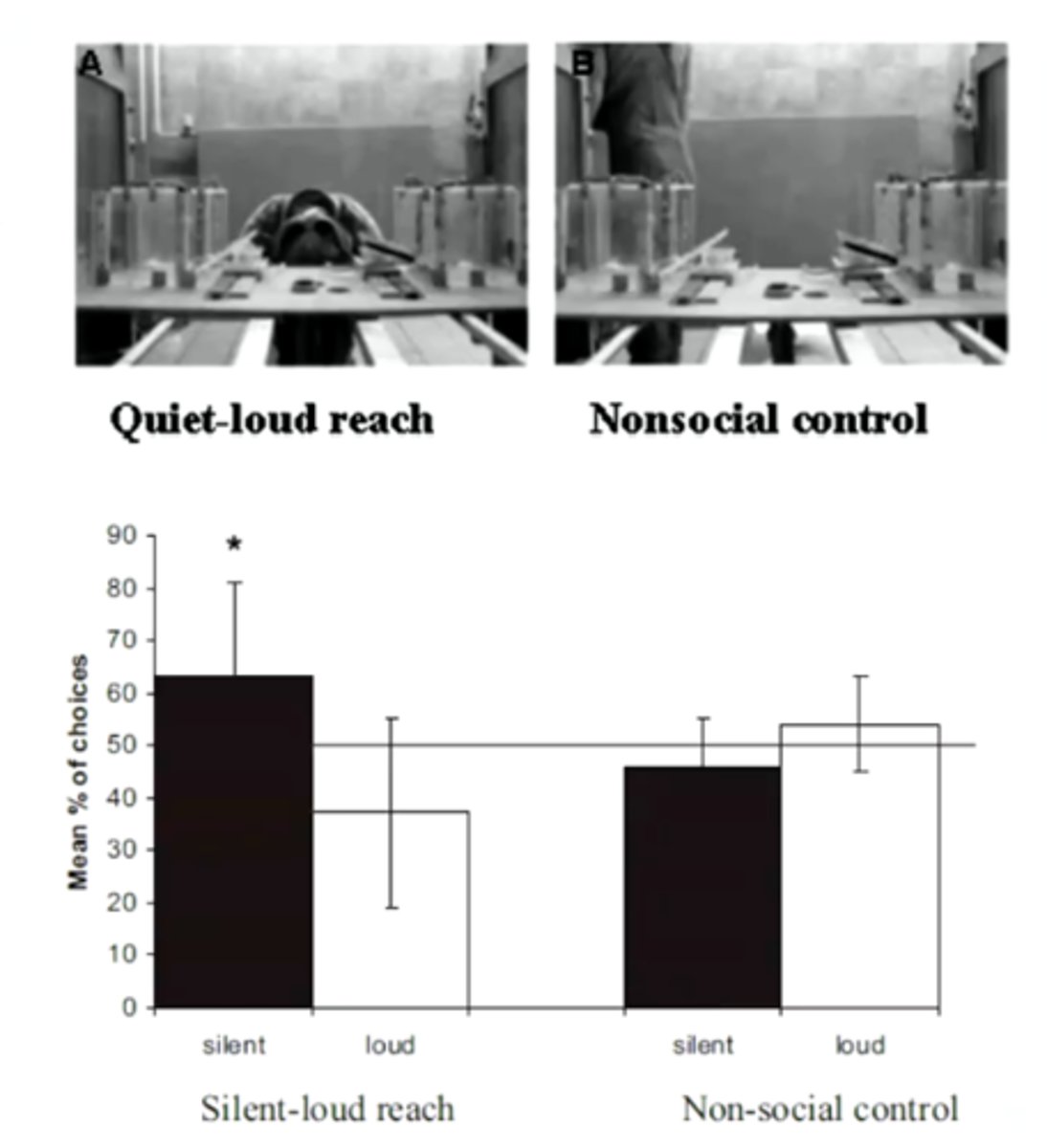
What was the apparatus in the Auditory perspective perspective
one gate which a treat was behind was loud and obnoxious and the other gate where the treat was was quiet/silent.
Melis, Call & Tomasello (2006) results
when human competitor was present, chimps reached through quiet tunnel and therefore were sensitive towards what the experimenters could potentially hear. reached into either gate when competitor was absent.
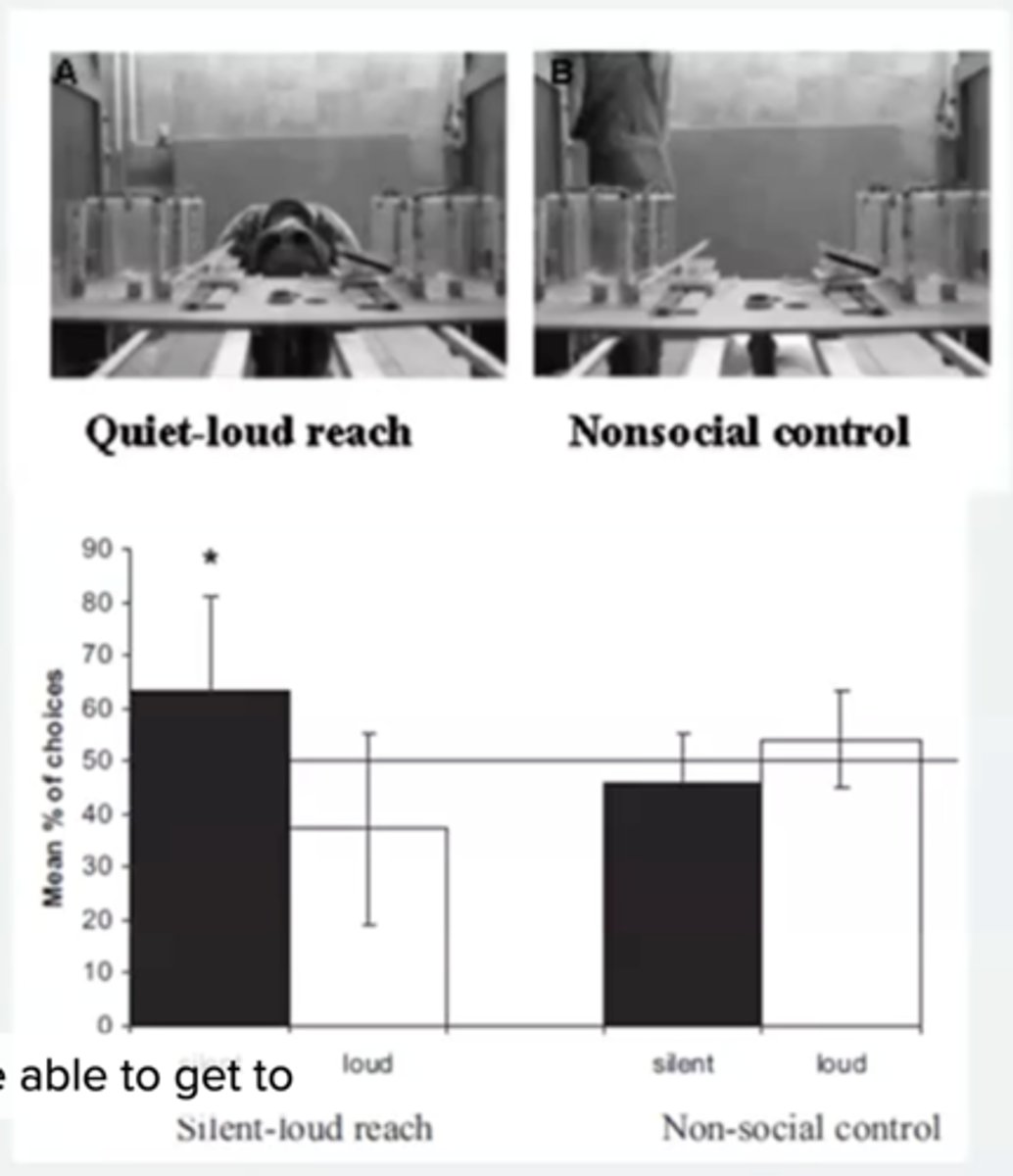
Melis, Call & Tomasello (2006) findings
chimps are aware auditor-ally of what others can perceive. (links to environmental circumstaces in the wild) exhibiting behaviours without prior experiences - not learnt conditioned behaviour. they understand what the other chimps are thinking and behave in a certain way in novel situations that don't occur in the wild. Contradicts Povinelli.
Call & Tomasello (1999) FB task
No apes passed the cup test - didn't retrieve treat from where they saw it was swapped to. all went for cup experimenter pointed to.
- illustrates limit of chimps ToM?
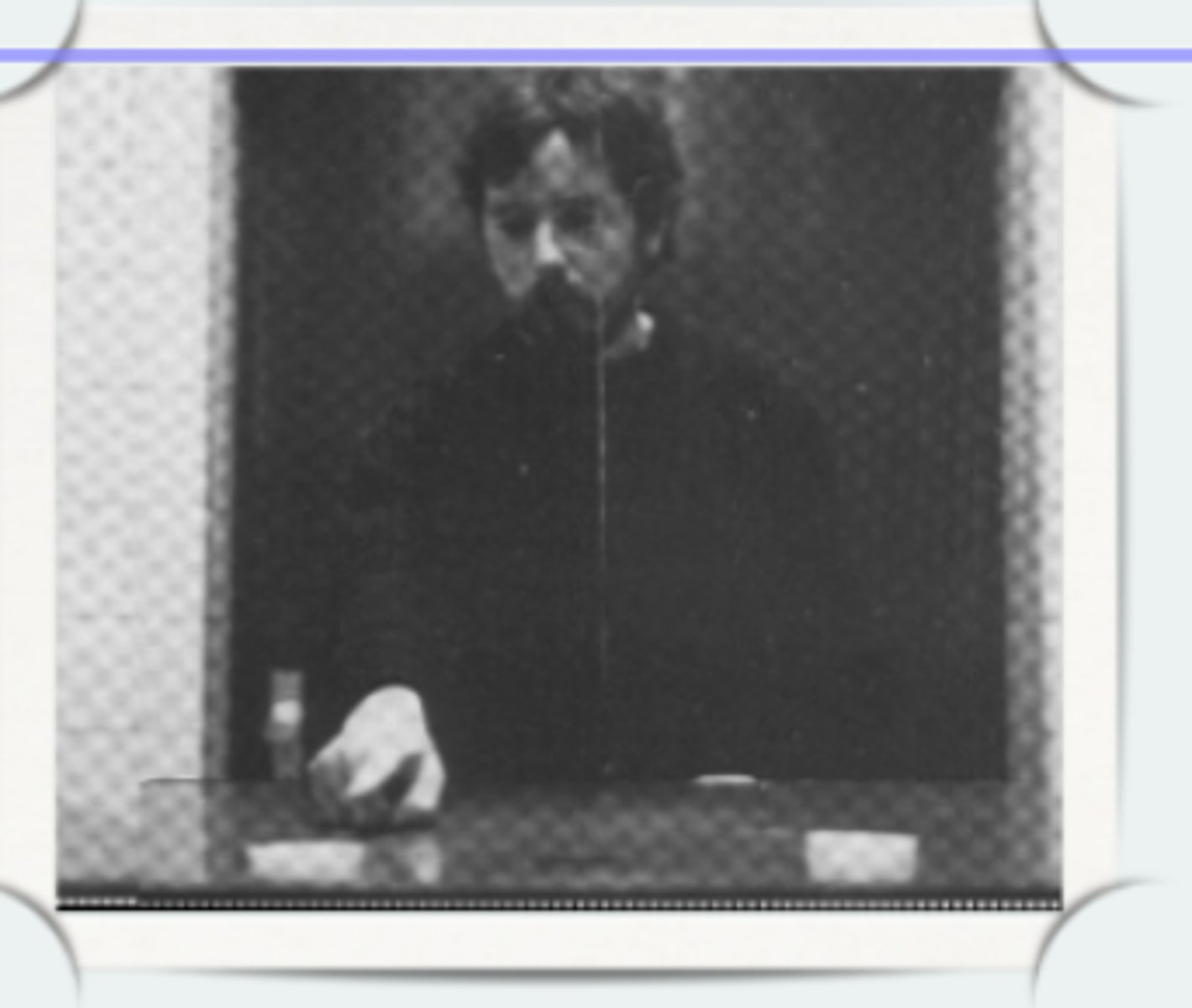
Marticorena et al (2011) FB in the wild with Rhesus monkeys.
violation of expectation task - lemon automatically moves from one box to other.
- unexpected - reaches to box where lemon is not (true belief task - experimenter sees lemon being moved)

Marticorena et al (2011) - when was no difference in looking time observed?
when the experimenter was hidden behind a barrier as lemon was moved. (false belief) -
limitation! no ability to represent the FB.
Marticorena et al (2011) findings
Represent whether actor is knowledgable or ignorant but did not expect the actor to search in the wrong location on line with their false belief.
- they can represent the knowledge and ignorance of others but not their beliefs.
Krupenye et al (2016) eye tracking FB. anticipatory gaze.
chimps tend to look at target box (with toy in it)
- more of apes looked at box where guy in green shirt would have thought the toy was.

how would Tomasello interpret Krupenye et al (2016) findings?
Great apes anticipate that other individuals will act according to false beliefs. apes have ToM in some sense.
how would Povinelli interpret Krupenye et al (2016) findings?
Apes use knowledge of behavioural rules - that people look for objects in the place they last saw them. just knows behaviour - not thinking about what others know